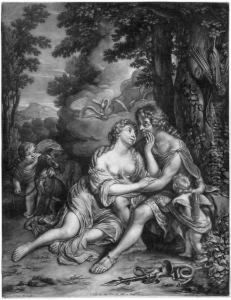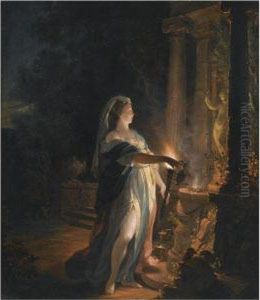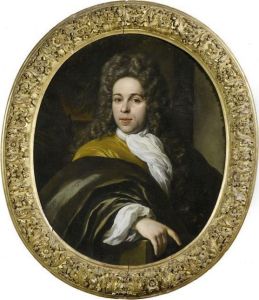Nicolaes Verkolye Paintings
Nicolaes Verkolye, sometimes also spelled Nicolaes Verkolje or Nicolaes Verkolje, was a Dutch painter and mezzotint artist born in the year 1673 in Delft, Netherlands. He is known for his contributions to the Dutch Golden Age of painting, particularly for his genre scenes, portraits, and mezzotint engravings. Verkolye was the son of Jan Verkolje, a well-regarded painter and engraver, from whom he likely received his early training in the arts.
Nicolaes began his career following in his father's footsteps, developing a style that combined the elegant and graceful aspects of the late Dutch Golden Age with a certain attention to detail and a softness of execution that was characteristic of his works. He was particularly adept at rendering the play of light and shadow, a skill that lent a delicate and atmospheric quality to his paintings. His subjects often included intimate domestic scenes, sometimes with a hint of gallantry or a moralizing element, which was not uncommon in Dutch genre paintings of the time.
Throughout his career, Verkolye enjoyed a fair amount of success. He became a member of the Guild of St. Luke in Delft in 1696, which was the official guild for painters, and he also worked in Amsterdam. His works were sought after by patrons, and he contributed to the development of the mezzotint technique in the Netherlands. Mezzotint, a form of printmaking known for its rich and subtle gradations of light and shadow, was well-suited to Verkolye's artistic sensibilities and allowed for the wide dissemination of his images.
Nicolaes Verkolye's artistic legacy is somewhat overshadowed by the more famous artists of the Dutch Golden Age, such as Rembrandt, Vermeer, and Frans Hals, but his contributions to the period's art, particularly in the realm of printmaking, are significant. Verkolye's works can be found in various museum collections, offering insights into the domestic life and aesthetics of the late 17th and early 18th centuries in the Netherlands. He passed away in 1746, leaving behind a body of work that continues to be appreciated for its elegance and craftsmanship.






